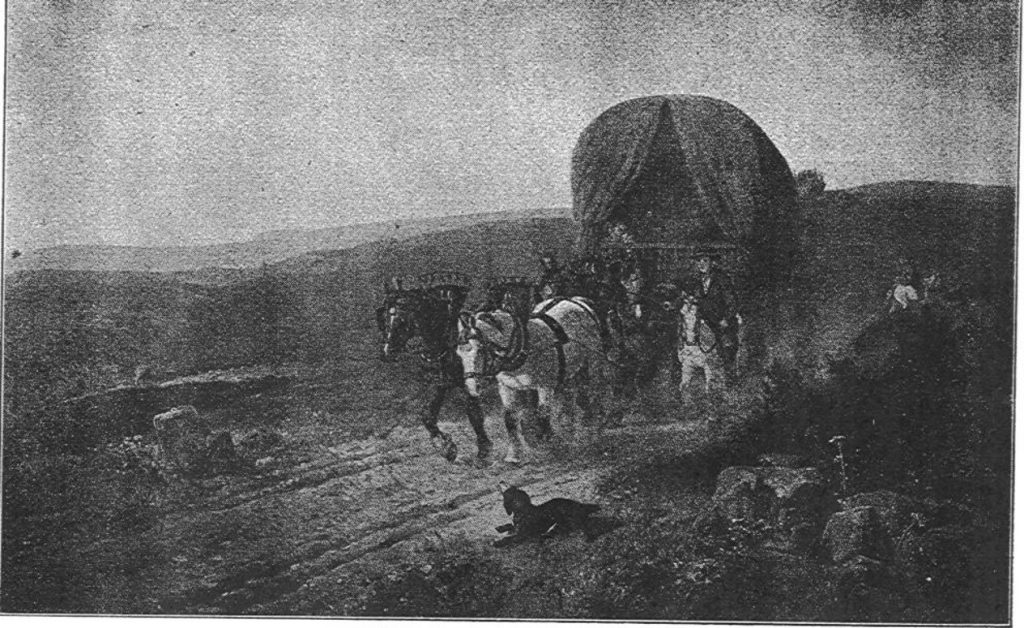The Romans laid good metalled roads to move soldiers and supplies quickly across their Empire: they measured distance to aid timing and efficiency, marking every thousandth double-step with a large cylindrical stone. 117 still survive in the UK. The Latin for thousand was ‘mille’ and the distance was 1618 yards; the eventual British standard mile was 1760 yards, although ‘long’ miles also existed into the 19th century. After Roman times, roads developed to meet local community needs: in 1555, an Act of Parliament made local parishes (or often townships in the North) responsible for their upkeep and boundary markers became important. In 1697, the Justices were ordered to erect guideposts at cross-highways and on the moors.

At this time, travel by road was slow and difficult. The sunken lanes became quagmires in wet weather and occasionally both horses and riders were drowned. It took 16 days to cover the 400 miles from London to Edinburgh. So Turnpike Trusts were set up, by Acts of Parliament, from 1706 to the 1840s. Groups of local worthies raised money to build stretches of road and then charged the users tolls to pay for it – just like the ‘M6 Toll’ today. The name ‘turnpike’ comes from the spiked barrier at the Toll Gate or Booth. The poor bitterly resented having to pay to use the roads and there were anti-turnpike riots.

From 1767, mileposts were compulsory on all turnpikes, not only to inform travellers of direction and distances, but to help coaches keep to schedule and for charging for changes of horses at the coaching inns.The distances were also used to calculate postal charges before the uniform postal rate was introduced in 1840. At the height of the turnpike era, there were 20,000 miles of roads with milestones.
From the 1840s, rail travel overtook road for longer journeys and many turnpike trusts were wound up. In 1888, the new County Councils were given responsibility for main roads and rural district councils for minor routes. As faster motorised transport developed so the importance of the milestones waned.

‘Milestone’ is a generic term, including mileposts made of cast iron. Such waymarkers are fast disappearing; around 9000 are thought to survive in the UK. Most were removed or defaced in World War II to baffle potential German invaders and not all were replaced afterwards. Many have been demolished as roads have been widened, or have been victims of collision damage, or have been smashed by hedge-cutters or flails.
Nowadays, roadside milestones generally fall within the remit of the local Highways Authority or the Highways Agency and their contractors.
Find local milestones and other waymarkers on our website, in the Repository, http://www.milestonesociety.co.uk or onwww. Geograph.org.uk. Restoration and Conservation guidance is offered, too !